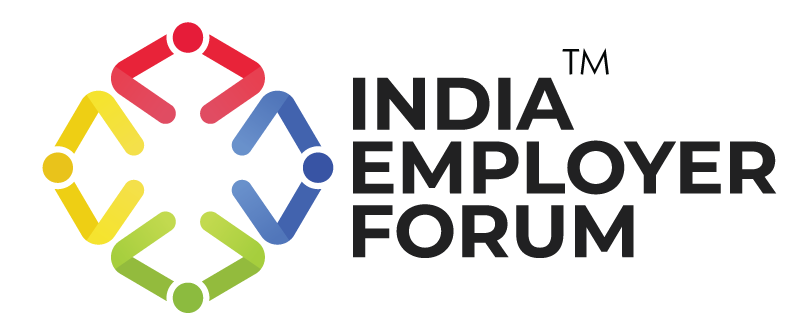Talent has become more valuable than ever, often surpassing financial capital as the foundation for lasting success. As technology accelerates change and automation redefines the very nature of work, organisations are in a new race: not just to acquire customers or resources, but to attract, nurture, and retain world-class talent. Leaders who act on this shift now will gain a competitive edge that compounds over time.
In this blog, we explore why talent is the most valuable currency in today’s economy, how global dynamics are reshaping talent strategies, and what leaders must do to stay ahead. From employer branding to AI-powered personalisation and ROI-driven people strategies, we uncover what it takes to win the talent race.
Why Talent Has Become the New Capital
The foundation of economic growth is shifting from capital and machinery to human capability. The rise of knowledge work and digital transformation means that creative, skilled individuals are now the true drivers of innovation, problem-solving, and sustained impact. It’s no longer just about automating tasks or investing in tools; success lies in empowering people to lead transformation from within.
Talent is a multiplier. Businesses with agile, high-performing teams move faster, adapt better, and consistently outperform their peers. Investors are increasingly evaluating companies not just on their financials, but also on the strength of the team behind the vision.
According to NASSCOM, 90% of Indian CEOs cite a tech talent shortage as their biggest barrier to growth. TeamLease Digital’s research reveals that only 38% of graduates in India are job-ready for digital and tech roles.
Whether a startup or a Fortune 500 company, those that invest in talent pipelines attract not only the best minds but also strategic capital and partnerships. Talent isn’t just an asset, it’s the foundation of value creation.
Borderless Hiring, Local Loyalty: Cracking the Global Talent Code
The talent competition is no longer confined to borders. With hybrid models and digital connectivity, companies are hiring from anywhere. Yet, retention depends on localized, meaningful engagement.
Indian professionals, in particular, are prioritizing purpose, flexibility, and skill growth. A recent study showed:
- 62% negotiated a raise in the past year.
- 37% succeeded.
- More than compensation, they expect ethical leadership, an inclusive culture, and visible career paths.
What Top Talent Wants?
-
Purpose, Values, and Mission
Today’s professionals want to be part of something meaningful. They’re drawn to organizations making a positive impact, not just profits. Inclusive, transparent leadership and diverse teams aren’t just nice-to-haves, they’re essentials.
-
Growth Potential and Challenging Work
Ambitious professionals are looking to stretch, learn, and lead. Exposure to emerging technologies, mentorship, and career pathways makes a huge difference in retention.
-
Work-Life Balance and Well-being
Top performers value mental health, flexible schedules, and organizations that promote well-being as a strategy, not an afterthought. They don’t want to just follow instructions. Top talent wants roles where they can experiment, influence, and solve meaningful problems.
Reimagining Talent Strategy: 6 Fresh Plays for 2025
1. AI & Data-Driven Personalisation
AI is transforming workforce management by making growth and retention more strategic. With tailored growth paths, AI matches employees to internal opportunities that align with their strengths and goals, boosting engagement and career satisfaction. Notably, companies using AI in recruitment have seen 12% faster hiring cycles and more inclusive outcomes, proving that smart tech can also drive smarter people’s decisions.
2. Skills-First Hiring & Internal Mobility
Degrees are out; skills are in. Hiring for capabilities is 5x more predictive of performance. Promote from within: map real-time skills and enable lateral moves and reskilling. High-performing professionals seek workplaces where they can grow. Companies must invest in mentorship programs, learning opportunities, and stretch assignments that challenge and support talent. Equally important is offering clear career pathways, transparent roadmaps that help individuals see their future within the organization.
3. Next-Level Flexibility
Flexibility has become a cornerstone of talent attraction. By offering remote and hybrid work options, organizations can meet talent where they thrive, whether it’s at home, in the office, or somewhere in between. Just as important is focusing on employee well-being, including mental and physical health support. Recognizing the need for work-life integration not only boosts morale but also sustains long-term productivity.
4. Employee Experience 2.0
Purpose-driven roles and real-time recognition platforms increase motivation. Turn the workplace into a space for meaning, not just productivity. Additionally, non-monetary rewards, such as public recognition, decision-making autonomy, and opportunities for personal growth, play a vital role in building loyalty and motivation. Today’s talent is looking for more than money; they seek value, balance, and purpose.
5. Tech-Enabled Onboarding & Culture Building
Digitally enhanced onboarding over 6–12 months boosts retention and integration. Culture analytics help bridge gaps in distributed teams. Hiring success isn’t just about qualifications; cultural alignment is just as critical. Companies should hire not only for skills but also for shared values, focusing on candidates who will actively contribute to and elevate the organization’s culture. Creating a workplace that fosters inclusion and belonging is key.
6. Measuring What Matters: Talent ROI
Rather than viewing talent as a cost, progressive companies treat it as a high-yield investment. Investing in employee development increases retention by 24%. Internal hires reduce cost-per-hire by over 40%. Embed people KPIs alongside financial metrics. Talent strategy should sit next to capital strategy on the leadership dashboard.
Leadership Mindset: From Gatekeeper to Talent Magnet
The leaders of tomorrow view talent as a strategic advantage, not a pipeline to manage, but a community to nurture. They align business strategy with individual aspirations and empower teams with autonomy, tools, and mentorship.
In this new era, talent is the currency with the highest return. The sooner leaders act to attract and foster it, the more certain their edge will be. The future won’t be built by capital alone but by those who understand that people are the new engine of growth. Building a resilient, forward-looking talent strategy isn’t optional; it’s the surest way to lead in the decade ahead.






